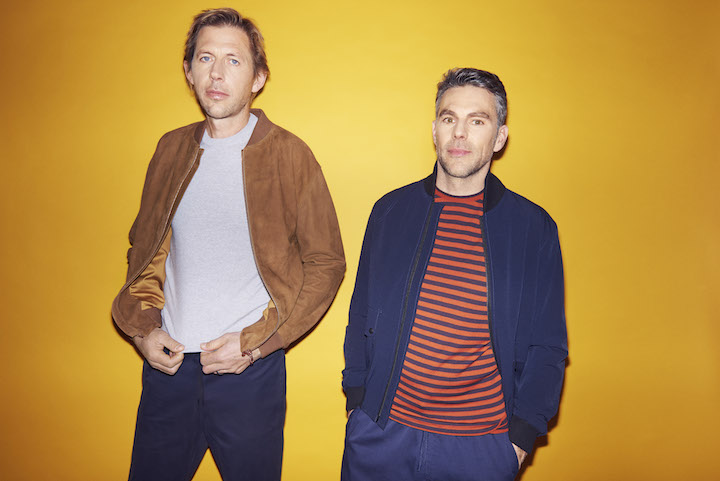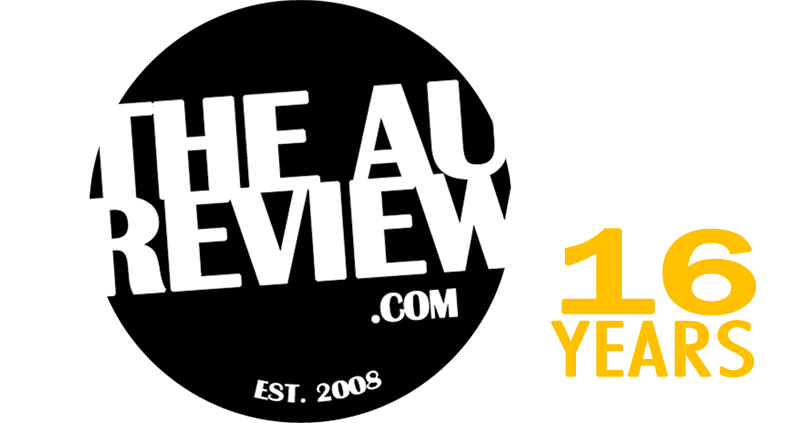
Groove Armada have been releasing banging dance tunes such as “I see You Baby” and “Superstyling” for over 25 years. The British duo of Andy Cato and Tom Findlay are bringing their DJ set back to Australia in January for Adelaide’s Vintage Vibes Festival. We chatted about what’s kept the show fresh over all these years.
Let’s start at the beginning and tell me what has kept you together for the last 25 years?
Andy: I think what has kept us going has changed over time. It’s a fairly predictable curve. At first anything is possible and the excitement of young people getting swept up into the music machine. Within weeks you go from carrying record players to hole in the wall to warehouse parties in East London to limousines in Los Angeles. The world was completely crazy in a very fun way.
The middle bit is where things get a bit tougher. You’re a couple of albums in, and there’s record company politics involved. You realise that life isn’t in your control. What emerged was the live show, playing dance music as a band. We dedicated thousands of hours of effort and that became the thing that we were most proud of. That was the thing where we could decide where and when we did that. That became a focus for that middle period.
Towards the end we’ve both been through different experiences which have rekindled the sheer joy of a thirty-year friendship and the ability to still play music in a nightclub to people who are up for it. You appreciate it more when you realise that these opportunities are finite. In your 20s or 30s, Saturday nights seem infinite, so it gives you a real sense of appreciation.
I understand that you finished doing the live shows last year.
Tom: yes, we did “retire” three times, but this time it is final. We both have quite complex other lives, and the live thing is all-encompassing. It’s huge to take that amount of people on the road and decisions that you have to make, practically, financially, and emotionally – it’s really exhausting. So, we just DJ now and that’s a lot simpler.
I was watching a docu recently on John Lydon and it seems that there is not as much money to be made as a musician as most people would think. It seems that it is quite an expensive venture.
Tom: yeah, it really is. I think in the early days we were quite obsessed with it. With the costs of the shows, we were just about making a profit. We were just about being the best version that we could be. We got a bit smarter about that, but it took us about twenty years to get there.
What I love, listening to your recent GA25 album, is that you’ve kept the classic songs alive by reimagining them. Is that one of the ingredients that keeps you fresh?
Andy: I think that was the big thing with the live shows, we wanted to make sure that everyone who came along to the shows, heard the songs that they wanted to hear. As we were evolving and the band was evolving, we were constantly inspired by the sights and sounds that emerge over 25 years. We would take the core theme and reimagine it. Coming from a dance music culture, that’s what you do all the time. That 25 process felt like a very natural process in that regard.
It actually took me by surprise how many songs were familiar to me. “Purple Haze” for example is a great song. I didn’t realise before that Francis Rossi was a contributor.
Tom: The link there is that our tour manager is Jamie Young and Bob Young, who is basically Rossi, Parfitt and Young, the third member of Status Quo, and we have strangely strong links with the Quo. That sample was a random one from an album April Spring Summer and Wednesdays.
Andy: The Quo are very much a blues band – great album.
No-one would ever consider Groove Armada to be a blues act, yet you’ve managed to mix different genres into dance. Another great song “My Friend” is taken from “Best Friend” by Brandy.
Tom: There’s a great funk sample at the heart of that. The little layer of the vocal and the descending keyboard thing that made a difference really. That’s something that we always did. In the early days when you had a sampler, you couldn’t put that much information into a sampler. You’d end up with twelve samples that probably shouldn’t go together. It would force you into these weird melodies. You’d have Andy’s trombone on the top of Patti Page’s vocal from “Old Cape Cod”. You find yourself in weird musical corners you’ve gotta fight yourself out of. I think that’s a signature thing of ours, taking something classic and authentic and mixing it with something modern.
I’m fascinated by the idea of interpretation versus interpolation. I think sampling seems to have become a lot more mainstream now. It seems a great way to keep music fresh and alive.
Tom: We’re getting it done to us all the time now. We’re constantly being sent reverses of stuff we’ve done or taken a vocal and I think you just have to accept the musical merry-go-round that we exist in now.
It seems to me that music sits in that strange vortex between permanent and temporary. Does your music then take on a life of its own?
Andy: When we first arrived in Australia, “At the River” had just came out, we were wandering around this new country, with the new sights and smells and stuff, and “At the River” was being played in shops and taxis. It doesn’t feel like your tune anymore. It becomes a soundtrack to a life on the other side of the world. It’s a brilliant process.
It must be a strange feeling hearing your music played in these places.
Tom: it is. Lots of people seem to get married to “At the River.” There’s this strange thought of all these random weddings up and down the country.
You’ve used Australian artists such as Confidence Man on the “Easy” remix and Nick Littlemore on “Get Out on the Dancefloor.” Is it a coincidence that you have an affinity for Australia?
Tom: Some of our best times touring have been in Australia. Like Andy said, it was incredibly humbling and lovely to go to the other side of the world and being warmly embraced. Some of the gigs like at the Myer Music Bowl were my favourites and Nick was an enormous musical influence on us. We loved all that PNAU stuff, and the first album of Empire of the Sun. He came over to the UK and spent a few weeks with us in the studio and we had an amazing journey of discovery with him. He was brilliant, like the third member of the band.
You must have met some incredible artists along the way. Is it true that you met Prince?
Andy: We nearly did. We were playing a gig and there was a big hullaballoo. His team came and cleared the balcony in preparation for his arrival, but he never turned up. But then Tom was watching him play a gig in London, doing a cover of “I See You Baby”, so I guess that will have to do.
Tom: He was singing it to a girl on stage. I realised then that it must have entered his consciousness. I’ve read a lot about him, and he was deeply aware of music around him. He was an incredible musician, but he was also deeply curious. Somehow, we entered the Purple One’s consciousness.
Overall, you seem to write upbeat happier songs. Is that something that you find easy to do? A lot of artists I talk to seem to find it easier to write sad songs.
Tom: I think that our core grounding is in the rave days, and that’s a celebratory scene. We’ve dipped our toes into some melancholia along the way, and I think Black Light was an album that was infused with a lot of pain. I sometimes end up having a little cry to that album. It was a cathartic process. The early records were during that era that Andy was talking about, travelling around the world, playing, and having fun. You’d be mad not to be able to enjoy something like that. You get a bit philosophical along the way, but now we’ve come full circle and feeling appreciative of what we do. I don’t think that there is much room for melancholia in house music.
Andy: Yes, there’s definitely some melancholia on the Black Light record, but it all depends on how you define it. In a lot of those tunes, like “Remember” for example, or down tempo songs like “Lazy Moon” or “Edge Hill”, it’s kind of film music. Whether it’s melancholy or uplifting depends on the thing that you’re sitting in or looking at, at the time. I was listening to that last night, picking my daughter up, because in a strange way that’s what Spotify seems to do. We had elements of the Groove Armada catalogue via some algorithm in the Nevada desert. I was listening to some of those tunes coming home and I think that there is a filmic quality that leaves the emotions pretty open.
Tom: that stuff was all quite introspective and made in small rooms. Things like “Superstylin’” are just written for joy. That’s probably the distinction between our stuff. There’s the late-night stoner tunes and the ones with music in the park in mind.
________________________
Catch Groove Armada playing a DJ set at Vintage Vibes Festival in the Adelaide Hills. With a line-up that includes Rudimental (UK), Milky Chance (GER), The Teskey Brothers, DMA’S, Ball Park Music, Lord Huron (USA), Meg Mac, Cub Sport, Drapht, Marlon, Sea Girls, Stellie, Surahn, Winston Surfshirt, along with some much-loved local bands, Vintage Vibes is set to be two glorious days of music, food, drink, and activations.
They will also be performing a DJ set at the Australian Open Finals Festival on the 28th Jan (Men’s final day) at John Cain Arena in Melbourne. Head to the Australian Open website for more information.
Vintage Vibes plays over January 26th and 27th – head to the official website for more information
